So, you’ve just bought a new leather item. And as you may know, leather needs extreme care and should be cleaned frequently with the right products. Regarding leather care, you’ve probably heard of both saddle soap and leather conditioners. Each of these cleaning solutions has its own pros and cons, and it can be difficult to decide which one is the best for your leather item. In this article, we’ll explore saddle soap vs leather conditioner in more detail to help you decide which cleaning method is best for you. So let’s get started!
Why It’s Important to Choose a Proper Maintaining Product for Your Leather
Leather is a natural material that has been used for centuries for clothing, furniture, and other items. It’s a durable material that can last for many years if you take care of it properly. Unfortunately, it can succumb to water damage, dirt, and other harsh elements if it isn’t maintained.
Unconditioned leather will eventually dry out, crack, and fade, which can ruin your favorite items. To avoid this, you need to condition your leather regularly using one of the many available conditioning products on the market. It is important to choose the right maintenance product for your leather, as different types of leather require different treatments. This choice is extremely important in order to ensure the longevity and vibrancy of your leather products.
Different types of leather include unprotected, full-grain, top-grain, corrected grain, and faux/synthetic.
Faux or synthetic leather does not need to be treated with any type of maintenance product, as it is designed with a non-absorbent layer that has been engineered to repel water and other liquid substances.
The two solutions we will be discussing in this guide are saddle soap and leather conditioner. Each of these product types has its own unique benefits and usage instructions. So let’s get started!
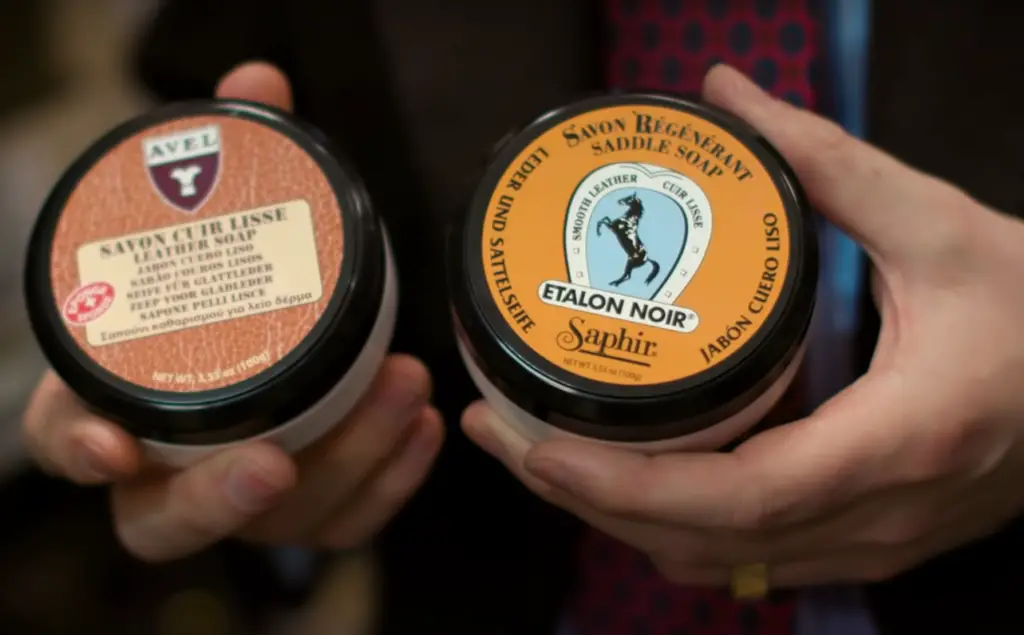
Saddle Soap in General
Saddle soap is a traditional choice for cleaning and conditioning leather. It usually comes in the form of a bar, which you can rub over the surface of your leather item to remove dirt and grime. Most saddle soaps are formulated with waxes that will help protect the material from water damage and cracking when used regularly.
Uses of saddle soap
While saddle soap can be used generally for leather maintenance, there are a few specific uses it is particularly well suited for.
Saddle maintenance
As you may have guessed from the name, saddle soap is most commonly used for the maintenance of saddles. It is ideal for cleaning and conditioning leathers that are frequently exposed to the elements or regularly require deep cleaning. Saddle soap can be applied with a damp cloth or brush, although care should be taken as too much may damage the leather.
Protection of outdoor gear
Saddle soap also provides some degree of protection from dirt and water. This makes it ideal for use on items such as boots, jackets, and other outdoor gear which require regular maintenance to keep them looking good and in top condition. [1] [2] [3]
Commercial Leather Conditioners in General
Leather conditioners are a popular choice for cleaning and conditioning leather saddles, boots, jackets, and other apparel. These products typically contain animal oils or synthetic lubricants that penetrate the leather to keep it soft and supple. Leather conditioners also help repel water, dirt, and sweat, as well as provide protection from UV rays.
Applications of commercial leather conditioners
Commercial leather conditioners contain oils, waxes, and other ingredients that nourish the leather, preserving its texture and preventing it from drying out. Leather conditioners can also be used on finished or unfinished leather to restore its original color without making it too stiff or sticky. Commercial leather conditioners are ideal for restoring older leather items such as furniture, car interiors, and shoes.
The versatility of these products can’t be overstated. Leather conditioners can also be used on other items such as jackets, purses, and hats to keep them looking good while protecting them from the elements. They’re even great for use on boots to help prevent cracking and creasing over time. [1] [2] [3]
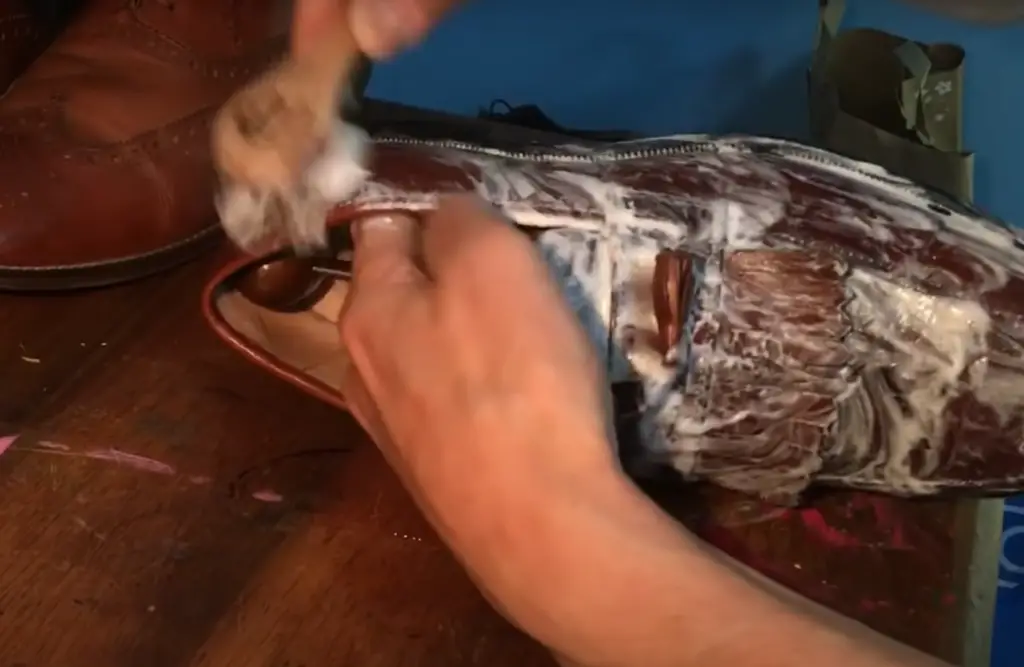
Comparison of Saddle Soap and Leather Conditioner
Now that we got the basics down, let’s compare saddle soap and leather conditioner head to head. In this section, we will discuss the advantages and disadvantages of each product.
Main purpose
Although saddle soap can be used for cleaning and conditioning leather, it is not as effective as a leather conditioner. Saddle soap does not contain any of the deep-penetrating agents that are necessary for restoring dry, cracked, and brittle leather back to its original form. It won’t make your leather boots any softer or prevent them from cracking down the line.
On the other hand, leather conditioners are designed for protecting, nourishing, and preserving leather products. It works by filling in the tiny cracks and crevices on the surface of the leather, thus restoring it back to its original form. Leather conditioners also help protect against water damage and fading from the sun’s ultraviolet rays. In addition, they can restore lost color and shine while conditioning the material beneath in order to keep it looking its best. If you’re struggling with a stiff, non-breathable leather item, then leather conditioners can deal with the issue.
This makes leather conditioners a must-have for anyone who values the longevity of their leather goods. It is especially useful if you’re dealing with heavily used items or those that have been exposed to harsh weather conditions.
One interesting thing we want to note is that you don’t need to choose one over the other. In fact, it’s better to use both saddle soap and leather conditioner together for optimal results. Saddle soap should be used to clean the surface of your leather item while leather conditioner should be used sparingly to refresh it after cleaning every now and then.
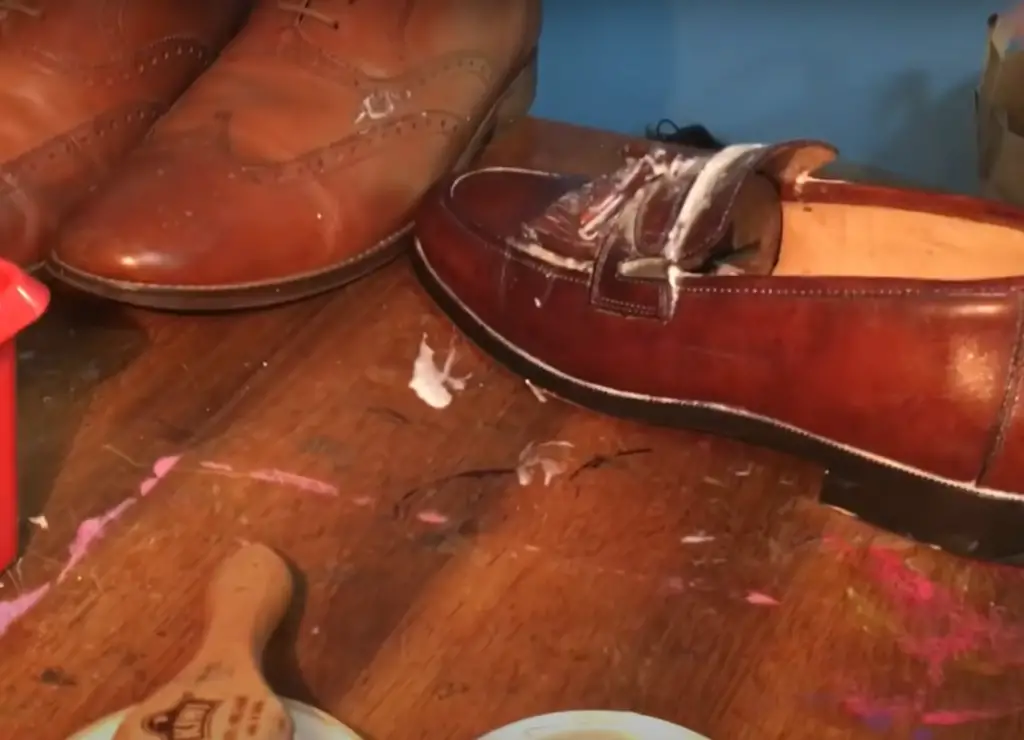
Ingredients
Ingredients are an important consideration when it comes to saddle soaps and leather conditioners.
Saddle soap is typically made of natural ingredients, including beeswax, lanolin, and glycerin. Beeswax and lanolin serve as a protective & moisturizing wax coating for the leather material when it is applied to the saddle or other item that needs cleaning. Glycerin works to provide moisture that helps preserve its structure.
The ingredients in saddle soap are specifically chosen to help protect and clean leather items without causing any damage. This makes it an ideal choice for cleaning and maintaining a wide range of leather goods, from saddles and harnesses to furniture upholstery and jackets.
When choosing a leather conditioner, it is even more important to know what’s in it as the things are more complicated than with saddle soap. The main ingredients are typically oils, waxes, and solvents:
- Oils: Oils are the primary moisturizers used in leather conditioners. They penetrate the leather fibers and help keep them soft and supple. Common oil ingredients include lanolin, mineral oil, neatsfoot oil, mink oil, and tallow (animal fat);
- Waxes: Waxes are added for waterproofing properties as well as to give the product a glossy finish. Beeswax and carnauba wax are common wax ingredients found in commercial leather conditioners;
- Solvents: Solvents are added to help the oils and waxes penetrate deeper into the leather and also help keep the product from becoming tacky. Common solvents used in conditioners include isopropyl alcohol, turpentine, and mineral spirits;
It’s important to read the label carefully when buying a leather conditioner to make sure it does not contain any harsh chemicals or bleaching agents that can damage your leather goods. Also, be sure that whatever you choose is specifically designed for leather or suede, as some products may not be suitable for use on these materials.
In general, quality leather conditioners should contain all-natural ingredients or at least ones with minimal processing such as a light solvent. When in doubt, ask the manufacturer or do your research online to make sure you’re getting a quality product.
Each conditioner has its own formula so it’s up to you to decide which one works best for your leather goods. As long as you choose a product that is designed specifically for your type of leather and contains all-natural ingredients, it should do the job.
Effects on leather appearance
Now let’s look at the effects that saddle soaps and leather conditioners have on the appearance of leather.
However, saddle soap does influence the color of the leather. When applied, it can lighten up the original color of the material, which can be a plus or minus depending on your preference. For instance, if you have a pair of boots that have become dull over time, using saddle soap can help restore the original color and make them look new again.
Leather conditioners, on the other hand, are designed to nourish the leather fibers and restore their suppleness. When applied regularly, they help keep leather items soft and pliable while also helping to prevent cracking and fading. Leather conditioners can also provide a glossy finish that looks more natural than the sheen created by saddle soap.
Unlike saddle soap, leather conditioners darken the leather slightly. This is due to the oils and waxes used in their formula, which can darken lighter-colored leathers over time. It’s important to note that this effect will not happen instantly and usually takes a few applications to see any noticeable change in color.
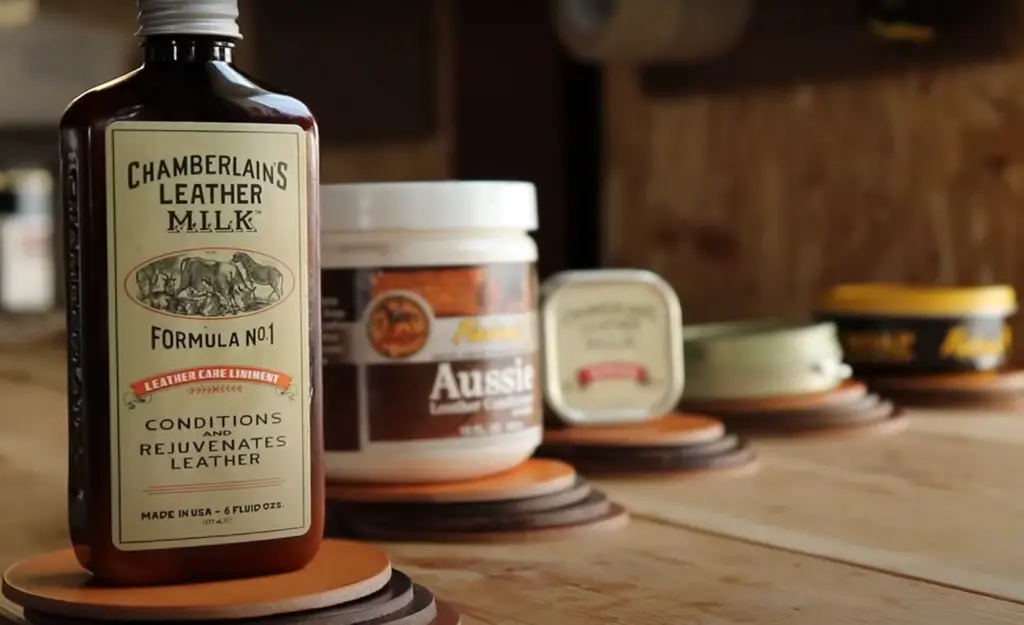
How often you should apply the product
The frequency of use also varies depending on the type of product you are using. This is another point to consider as you decide between saddle soaps and leather conditioners.
Saddle soap should be applied only during deep cleaning sessions. Deep cleaning is an essential part of leather care and maintenance as it helps with getting rid of dirt, grime, and other contaminants that can accumulate on leather over time.
Luckily, you only need to use it once twice a year or so, depending on how often your leather goods are exposed to dirt and sweat. If you want to make sure that your items will stay in good condition for longer periods of time, you should apply saddle soap at least twice a year.
When it comes to leather conditioners things are pretty different. Leather conditioners should be applied regularly to help maintain the suppleness and softness of leather items. Generally speaking, you should use a leather conditioner every two months or so to ensure that your items remain in top condition for as long as possible.
It’s important that you shouldn’t over-apply either of these products. Too much of each can make your leather overly shiny or even tacky, so it’s best to stick with the recommended frequency.
The application process
Lastly, the process of application for saddle soaps and leather conditioners is slightly different.
For saddle soap, you need to make sure that your leather items are completely dry before applying it. And the leather should also be free of debris and dirt so you will need to do some prep work first. Brush off the dirt and then use a damp cloth to wipe away any excess moisture.
Next, using a soft moistened cloth, gently rub the surface of the soap to create a lather. Once the lather has been created, you can use it to rub down your leather items. Be sure to work gently and in circular motions to ensure an even coating. After everything is done, you should wipe off the excess lather with a dampened cloth, buffing the leather until it shines.
For leather conditioners, you should start by shaking the container to mix up the oils and waxes that are inside it. Next, you can dispense some of the solutions onto a clean cloth or brush and start applying it to your items. Work in circles and be sure to cover every inch of the leather goods with the conditioner. Once everything is done, let it sit for a while before wiping off any excess product with a dry rag. Keep in mind that this is subjective as the application process for leather conditioners can vary depending on the product you are using. It’s best to always refer to the instructions provided by the manufacturer before applying any products to your leather items. [1] [2] [3]
What About Leather Oils?
Finally, some people may ask about leather oils and their use in cleaning and maintaining leather goods. While leather oils can help to condition the leather and make it soft, they are best used in combination with other cleaning agents, such as saddle soap or a leather conditioner. Oils should not be used on their own, as they can create a greasy buildup that will eventually attract dirt and grime. When combined with saddle soap or a leather conditioner, however, oils provide an extra layer of protection and help to keep the leather looking its best for longer.
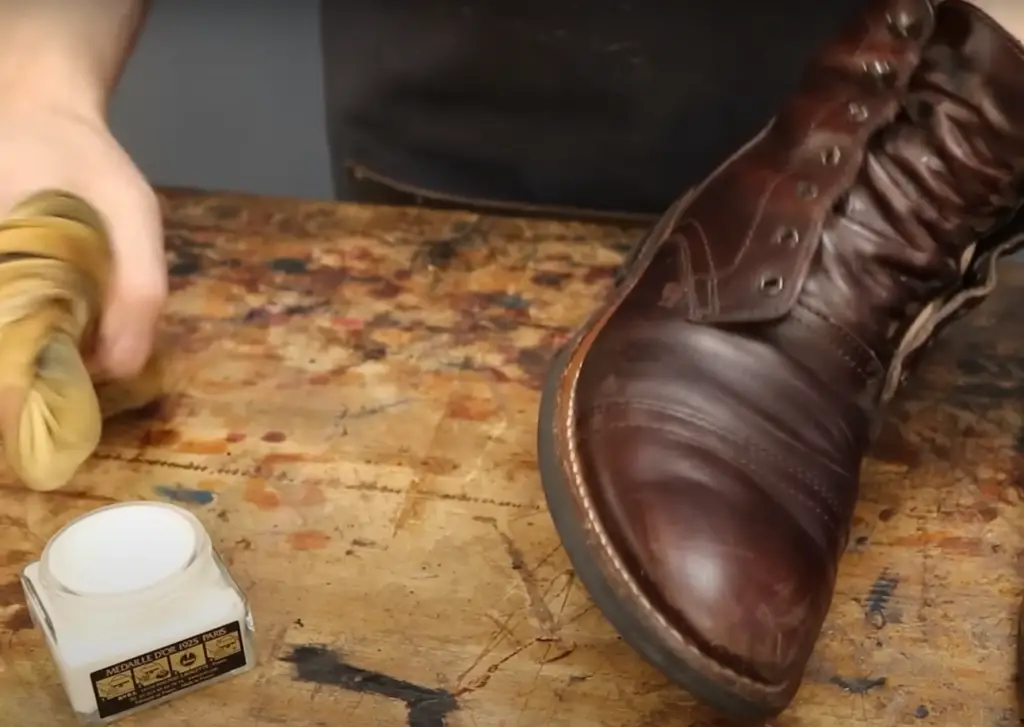
It is important to remember that all types of cleaners should be tested in an inconspicuous spot first before being applied to the entire item. This will ensure that the cleaner chosen does not cause any damage or discoloration to the material it is being used on. [1] [4]
FAQ
Do you need to wash off the saddle soap?
Yes, saddle soap should be washed off with a damp rag after use to ensure that the leather remains soft and supple. In most cases, you can deal with it with a slightly damp cloth, but if you’re dealing with tougher dirt, you may need to use a gentle soap or underwater rinse. When in doubt, it’s best to consult the instructions on the saddle soap packaging for more specific instructions.
Just remember to wipe off the moisture once you’re done, as leaving the leather wet could cause staining or damage to the material.
Do you need to condition the leather?
Yes, conditioning leather is an important step in keeping it soft and supple. Leather needs to be conditioned regularly to replace the natural oils that are lost over time due to wear and tear. Conditioners help preserve the leather’s strength, flexibility, and durability.
Leather conditioners provide nourishment and moisture to the leather while restoring its suppleness and preventing cracking or fading. In most cases, it should be applied every few months (depending on how often the leather is exposed to the elements).
Is leather conditioner the same as saddle soap?
No, leather conditioner and saddle soap are not the same. Leather conditioner is a product specifically designed to moisturize, soften, and protect leather items. It typically contains ingredients such as waxes, oils, and lanolin that help keep the leather supple while providing protection against staining, cracking, and fading due to environmental factors.
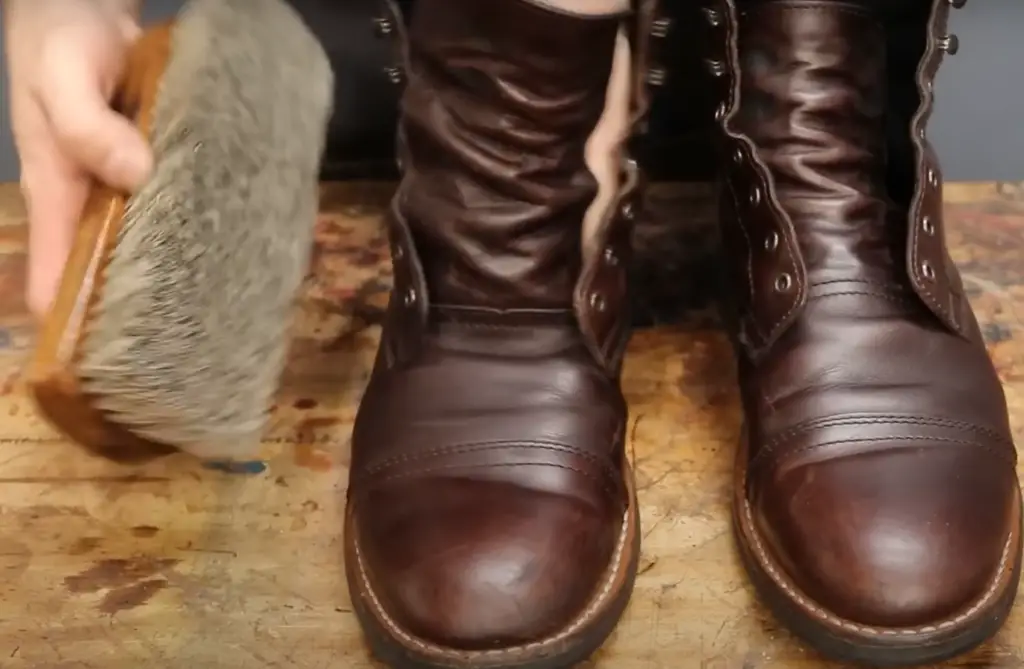
Saddle soap, on the other hand, is a combination of mild soaps and conditioning agents that help clean dirt and salt from the surface of the leather item. It does not provide any long-term protection or nourishment for the material itself.
However, both of these products can be used together in order to achieve the best results. Saddle soap should be used first to clean the item, followed by a light application of leather conditioner to protect and nourish it.
What is the best thing to condition leather with?
When it comes to conditioning leather, the best way to do so is by using a leather conditioner. Leather conditioners are specifically designed to moisturize and nourish the fibers of your leather, helping it stay comfortable and look its best for longer.
When choosing a leather conditioner, be sure to select one that is specifically made for leather, as some conditioners may contain ingredients that can damage the material. Additionally, make sure to apply the conditioner in an inconspicuous area first and inspect it closely before continuing — different types of leather may react differently to certain products.
Once you’ve selected a suitable product, you can apply it liberally with a cloth or sponge and let it sit on the leather’s surface for 10-15 minutes before wiping off any excess. Regularly conditioning your leather items will help keep them from drying out, cracking, and losing their color over time.
What is the best product to clean leather items?
The best product for cleaning leather items unsurprisingly is a leather cleaner. Leather cleaners come in a variety of forms and are designed to safely remove dirt, dust, sweat, and oils from leather products without damaging them. Generally, two types of leather cleaning solutions are available: saddle soap and leather conditioner.
Saddle soap is a type of cleaner made specifically for equestrian gear such as saddles and bridles. It is generally composed of an alkaline soap that lightly lathers when mixed with water to help loosen dirt particles. However, it too can be used on regular leather items.
Compared to leather cleaners, saddle soap is ideal for deep cleaning as it is designed to cut through the dirt, dust, and oils that accumulate on leather. It can also be used as a gentle degreaser to help break down tough dirt, but should not be used too frequently as it may dry out the leather.
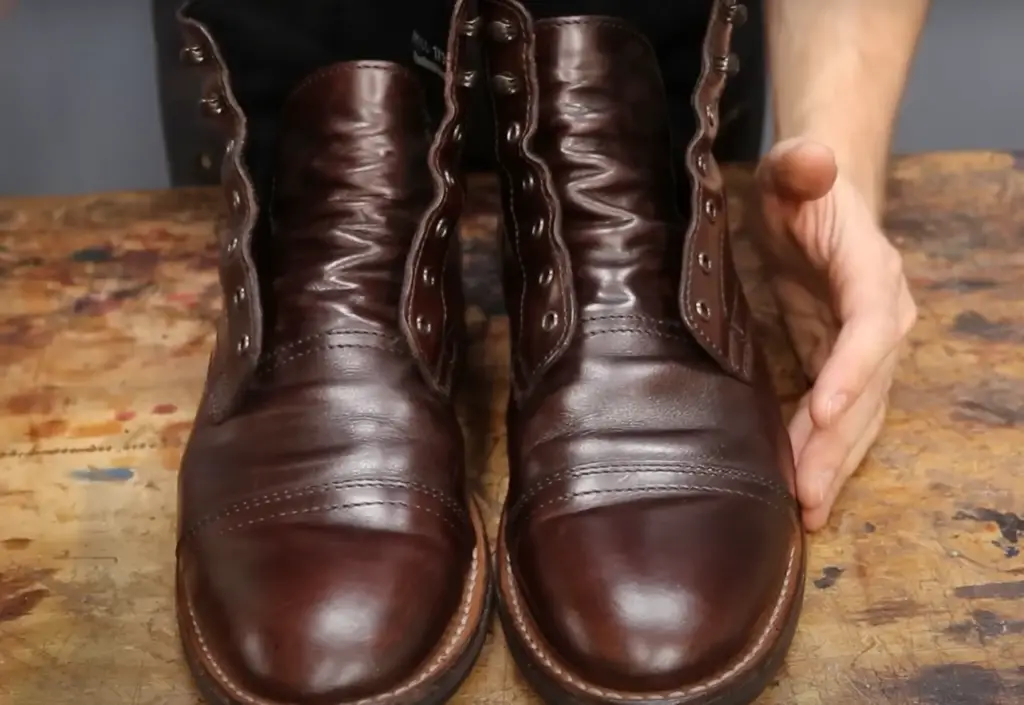
Does saddle soap make the leather darker?
That doesn’t mean that it can’t have any side effects on the condition of your leather, however. Saddle soap can lighten the color of your leather depending on how much you use it and how often. If used too often, saddle soap can strip away essential oils from the leather which can cause it to dry out and crack over time.
Useful Video: Difference Between Leather Cleaning Soap And Saddle Soap?
Conclusion
When it comes to maintaining leather items, many owners find themselves debating between saddle soap and leather conditioner, wondering which one is better. And as we found out, the answer is pretty straightforward as your choice will entirely depend on what you are wanting to accomplish with the product.
Saddle soap is perfect for deep cleaning the leather and removing dirt, grease, and grime from the surface. It won’t restore the softness of the leather – just the cleanliness.
Leather conditioner, on the other hand, restores suppleness to your leather items as well as helps protect them against water damage and cracking. Additionally, it can be used over time to restore color loss or fading due to age or sunlight exposure. In addition, there’s a large variety of conditioners for different leather types such as suede, nubuck, and waxed leather.
So while both saddle soaps and leather conditioners are great products for keeping your leather items in top shape, they each have different uses that should be taken into account when deciding which one best suits your use. You can combine both products for the ultimate in leather care and protection, but make sure to read any directions on their packaging for the best results.
Hopefully, this article has helped you understand the differences between saddle soap and leather conditioner as well as which one would be better for your needs. Thanks for reading!
References:
- https://stridewise.com/saddle-soap-vs-mink-oil/
- https://www.libertyleathergoods.com/saddle-soap/
- https://favoredleather.com/saddle-soap-vs-leather-conditioner/
- https://www.wikihow.com/What-Is-the-Best-Oil-to-Soften-Leather

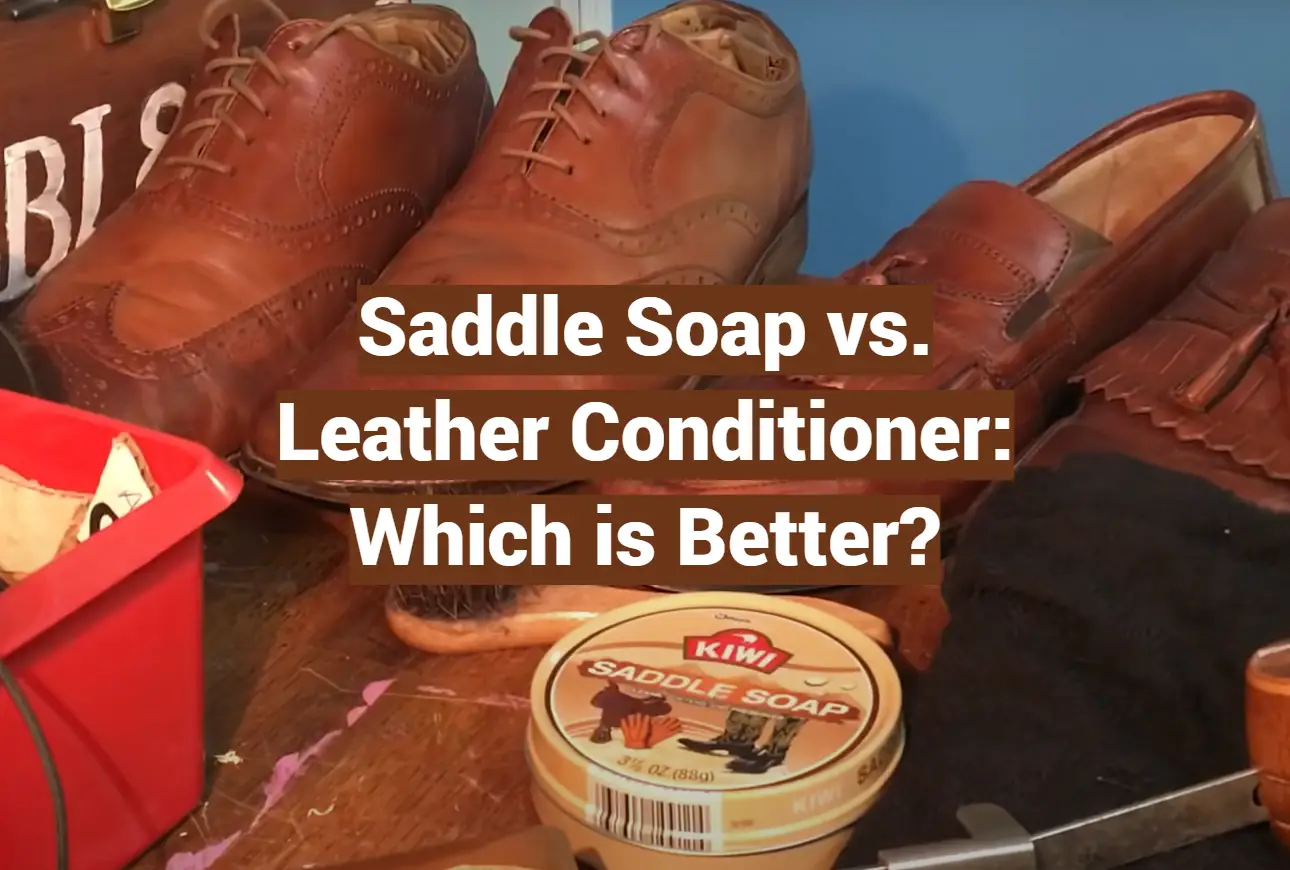
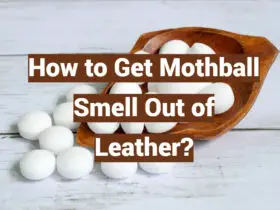
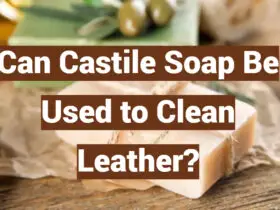
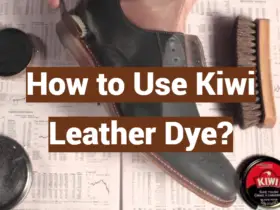


Leave a Reply